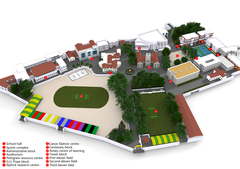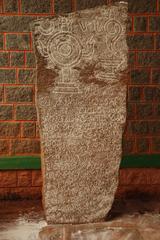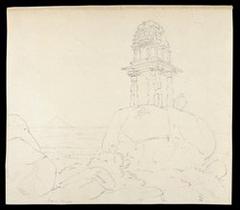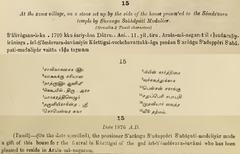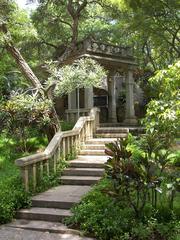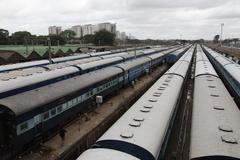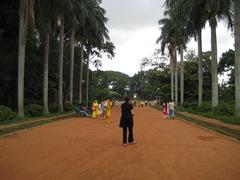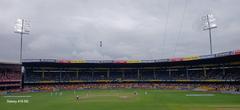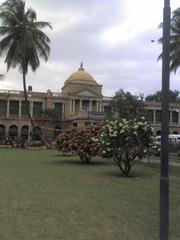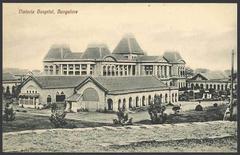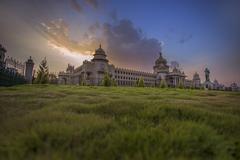State Bank of Mysore Bengaluru: Visiting Hours, Tickets, and Historical Significance
Date: 14/06/2025
Introduction
The State Bank of Mysore (SBM) building in Bengaluru stands as a monumental testament to Karnataka’s economic, cultural, and architectural heritage. Established in 1913 as the Bank of Mysore Ltd., under the patronage of Maharaja Nalwadi Krishnaraja Wadiyar IV and the engineering genius of Sir M. Visvesvaraya, SBM played a vital role in the region’s economic development and modernization. Although the bank merged with the State Bank of India (SBI) in 2017, its Bengaluru headquarters remains an enduring symbol of the city’s historical evolution and financial legacy (Navrang India).
This comprehensive guide explores the SBM building’s history, architectural highlights, civic significance, visiting hours, accessibility, ticketing, and travel tips—equipping you to make the most of your visit to this iconic landmark in Bengaluru.
Table of Contents
- Introduction
- Historical Background
- Architectural Style and Features
- Cultural and Civic Significance
- Visitor Information
- What to See
- Nearby Attractions
- Safety Tips & Best Time to Visit
- Frequently Asked Questions (FAQs)
- Visuals and Resources
- Conclusion
- References
Historical Background
The roots of the State Bank of Mysore trace back to 1913, when the Bank of Mysore Ltd. was founded to nurture local entrepreneurship and support industrial growth in Mysore State. With guidance from Sir M. Visvesvaraya, the bank quickly became a pillar of the local economy (Navrang India). The heritage building in Bengaluru was completed in 1923, occupying a site of historical importance—formerly the Bangalore Lunatic Asylum, established in 1847 (The Hindu). Post-independence, the bank was renamed State Bank of Mysore and, in 2017, merged into the SBI group, but its architectural and civic legacy remains prominent (Navrang India).
Architectural Style and Features
Indo-Saracenic & Indo-European Influences
The SBM building exemplifies the Indo-Saracenic and Indo-European architectural styles, harmoniously blending colonial classical elements—like domes, arches, and columns—with Indian motifs such as chhatris (domed pavilions), jali (lattice) screens, and floral carvings (Navrang India). Its robust stone façade, symmetrical arcaded halls, and wide porches evoke both grandeur and stability, befitting a trusted financial institution.
Symbolic Ornamentation
A highlight is the marble statue of Goddess Lakshmi, commissioned by the Maharaja and crafted in Jaipur, prominently displayed above the main entrance. This statue symbolizes prosperity and the bank’s commitment to community welfare. Inside, visitors can observe well-lit halls and interiors finished with polished stone, carved woodwork, and occasional murals reflecting Karnataka’s rich heritage (Navrang India).
Structural Layout
The building’s plan centers around a grand double-height banking hall, naturally illuminated via clerestory windows and crowned by decorative domes or vaulted ceilings. Load-bearing granite and brick walls, terrazzo floors, and teakwood details showcase the craftsmanship and material palette of the era.
Cultural and Civic Significance
The SBM building is more than a financial institution; it’s a vibrant civic symbol. Located at Mysore Bank Circle, it has historically served as a gathering point for public meetings, protests, and freedom movement activities. Although major demonstrations now take place at Freedom Park, the building’s legacy as a civic landmark endures (Navrang India).
The importance of this heritage is commemorated through philatelic releases such as the 2016 special postal cover depicting the Maharaja and Sir M. Visvesvaraya, underscoring its role in Karnataka’s history.
Visitor Information
Location and Accessibility
The SBM building is centrally situated at Mysore Bank Circle on Kempegowda Road, close to major transport hubs such as the Majestic bus stand and Bengaluru City Railway Station. Accessibility is enhanced by nearby bus stops, auto-rickshaws, taxis, and Cubbon Park metro station (HikersBay).
Visiting Hours and Tickets
- Visiting Hours: Monday to Friday, 10:00 AM to 4:00 PM; Saturday, 10:00 AM to 2:00 PM. Closed on Sundays and public holidays.
- Tickets: Entry is free. Visitors may access the building’s exterior and lobby during banking hours; operational areas are restricted.
Photography and Tours
- Photography: Allowed outside and in public areas, including the marble Lakshmi statue. Interior photography may be restricted for security reasons.
- Guided Tours: No official tours are currently available, but some heritage walks may occasionally include the SBM building. Check with local tourism offices or cultural organizations for updates.
Accessibility
The main entrance is accessible to most visitors, but some heritage features (such as steps and narrow corridors) may present challenges to those with mobility impairments. Visitors needing assistance are encouraged to contact the branch in advance.
What to See
- Façade and Ornamentation: Admire the Indo-European stone façade, grand arches, and marble statue of Goddess Lakshmi.
- Banking Hall: View the impressive, well-lit interior (lobby areas), featuring original architectural details.
- Historical Plaques: Some plaques and displays recount the bank’s historical milestones.
- Mysore Bank Circle: A bustling civic space, reflecting the building’s role in the city’s public life (Navrang India).
Nearby Attractions
- Cubbon Park: Expansive green space ideal for walks and relaxation (TravelTriangle).
- Vidhana Soudha: Karnataka’s seat of government, celebrated for its impressive Indo-Saracenic architecture.
- Bangalore Palace: Notable for its Tudor-style architecture and cultural events.
- Commercial Street: Popular shopping destination for handicrafts and textiles (TravelTriangle).
- High Court of Karnataka: Another striking heritage structure within walking distance.
Safety Tips & Best Time to Visit
The Mysore Bank Circle area is well-patrolled and generally safe, especially during the day. Keep personal belongings secure, especially in crowded areas.
The best time to visit is October to February, when Bengaluru’s climate is most pleasant for walking tours and outdoor exploration (TravelTriangle).
Frequently Asked Questions (FAQs)
Q: Is there an entry fee to visit the SBM building?
A: No, entry is free during banking hours.
Q: Can I take photographs inside the building?
A: Exterior photography is allowed; interior photography may be restricted. Please seek permission from bank staff.
Q: Are guided tours available?
A: No official tours are offered, but the building may be included in local heritage walks.
Q: Is the building accessible to persons with disabilities?
A: The main entrance is accessible, but interior features may pose mobility challenges. Contact the branch for assistance.
Q: Are there exhibitions or special events held at the building?
A: The building is operational as a bank; regular exhibitions are not held.
Visuals and Additional Resources
For an enriched experience, consult high-quality images of the SBM building’s façade, the marble Lakshmi statue, and interior architectural details. Use alt text such as “State Bank of Mysore heritage building façade” and “Marble statue of Goddess Lakshmi at SBM Bengaluru” for web accessibility and SEO. Interactive maps and virtual tours may be available on tourism websites.
Conclusion
The State Bank of Mysore building is a distinguished Bengaluru historical site, epitomizing the city’s journey from a princely state capital to a thriving modern metropolis. Its Indo-Saracenic architecture, symbolic ornamentation, and enduring civic role offer visitors a window into Karnataka’s past and present. Whether you’re a history enthusiast, architecture lover, or cultural explorer, the SBM building warrants a place on your Bengaluru itinerary.
Plan your visit during banking hours, explore the surrounding historical sites, and stay updated on heritage walks through local tourism resources. For more travel tips and cultural insights, download the Audiala app and follow our updates.
References
- Navrang India, 2022, State Bank of Mysore Building Heritage and History
- The Hindu, 2023, NIMHANS: A Walk Down the Memory Lane
- TravelTriangle, 2024, Best Places to Visit in Karnataka
- HikersBay, 2024, Bengaluru Tourist Information
- Mysore Tourism, 2024, Official Website
- Bengaluru Tourism, 2024, Official Website

